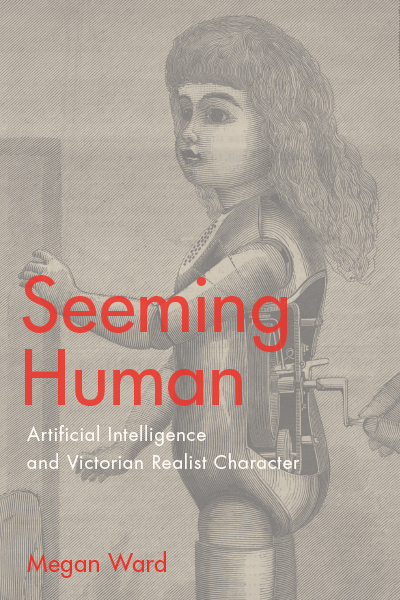Collations: Book Forum on Megan Ward’s Seeming Human: Artificial Intelligence and Victorian Realist Character
 V21 Collations: Book Forum welcomes Adam Fales, Heidi Smith, and Devin Griffiths in conversation about Megan Ward’s fascinating new book, Seeming Human: Artificial Intelligence and Victorian Realist Character (Ohio State Press, 2018). In this provocative work, Ward proposes “a new genealogy of realist character” (2) as a corrective to the historical preference for subjective interiority. Not only does she eschew interiority, but seeks a doubly heterodox alternative, reading nineteenth century fiction through the lens of twentieth century cybernetics and information theory to show how these attempts to draw the categories of human and machine together provide an apt figure for realist character. “This common contrast, in which being human is defined against the formulaic and the mechanical, has implicitly shaped our evaluation of fictional character’s realism” (127). Seeming Human thus draws from the behaviorist-oriented work of early Artificial Intelligence, especially in cybernetics and information theory, and borrows that work’s assumption that complex behavior is “more important than the representation of thought” (10). Ward focuses on four “forms of mimesis”: the feedback loop, the information system, the imitation game (colloquially referred to as the Turing test), and the Perceptron. Though these are concepts derived from mid-twentieth century science, they represent “the future forms of Victorian realist character” (12) for Ward; that is, they are prototyped by the modes of character that circulate through Victorian realism.
V21 Collations: Book Forum welcomes Adam Fales, Heidi Smith, and Devin Griffiths in conversation about Megan Ward’s fascinating new book, Seeming Human: Artificial Intelligence and Victorian Realist Character (Ohio State Press, 2018). In this provocative work, Ward proposes “a new genealogy of realist character” (2) as a corrective to the historical preference for subjective interiority. Not only does she eschew interiority, but seeks a doubly heterodox alternative, reading nineteenth century fiction through the lens of twentieth century cybernetics and information theory to show how these attempts to draw the categories of human and machine together provide an apt figure for realist character. “This common contrast, in which being human is defined against the formulaic and the mechanical, has implicitly shaped our evaluation of fictional character’s realism” (127). Seeming Human thus draws from the behaviorist-oriented work of early Artificial Intelligence, especially in cybernetics and information theory, and borrows that work’s assumption that complex behavior is “more important than the representation of thought” (10). Ward focuses on four “forms of mimesis”: the feedback loop, the information system, the imitation game (colloquially referred to as the Turing test), and the Perceptron. Though these are concepts derived from mid-twentieth century science, they represent “the future forms of Victorian realist character” (12) for Ward; that is, they are prototyped by the modes of character that circulate through Victorian realism.
The critical payoff of Ward’s insights for our own AI-saturated age is perhaps a more nuanced approach to our assumptions about which things count as seeming human in our understanding of what it means to be human. “When we interpret machines not as the opposite of the human but as its likeness, we can more fully recognize the possibilities for human development offered by the connectedness of the system, the growth of the feedback loop, or the heightened perceptions of the neural net” (127).
| Reflection by Adam Fales | Reflection by Heidi Smith | Reflection by Devin Griffiths |
Justin Raden, Convener and Co-Editor
Maeve Adams, Co-Editor
There are no comments yet.